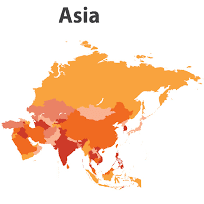This week’s convergence of a landmark development in graphics processing and a subtle shift in mainland economic readings is setting the stage for tomorrow’s US inflation report to carry unusual weight, challenging conventional assumptions and forcing investors to reassess their positioning.
A breakthrough at the heart of the semiconductor world has captured attention well beyond the confines of chip design, as Nvidia’s latest advance in artificial intelligence acceleration has prompted a rethink of growth trajectories in technology portfolios. The company’s announcement of a next-generation architecture capable of handling vastly larger datasets without a commensurate jump in energy consumption has reverberated through trading floors, lending renewed confidence to technology benchmarks even as traders brace for tomorrow’s Consumer Price Index release in the United States. Far from being a mere upgrade, the innovation underscores Nvidia’s ability to stretch the boundaries of AI deployment and financial forecasting alike, inviting market participants to imagine a scenario where technological momentum helps blunt the impact of rising input costs. It is this hypothesis, of innovation acting as a partial shield against macro headwinds, that has given recent rallies their peculiar character, marrying the empathic optimism of tech bulls with the disciplined caution of macro-focused investors.
In parallel to the AI narrative, fresh indicators from China have introduced a measure of complexity to the story, reminding investors that regional divergences remain potent drivers of global asset flows. Official manufacturing surveys surprised to the upside, hinting at a stabilisation in industrial activity that many had prematurely written off. The data did not signal an outright recovery but rather a tentative broadening of the floor beneath growth, suggesting that a combination of targeted stimulus and resilient domestic consumption is delivering a soft landing. Asian equities responded by eking out modest gains, a reflection of investors gradually assigning greater probability to a scenario in which China’s recovery unfolds without prompting aggressive monetary loosening that might unsettle currencies. In this context, the resilience of regional markets underscores a growing recognition that improvements in China need not come at the expense of broader financial stability, opening space for constructive equity inflows even as global central banks tighten.
Tariff outlooks have added a further twist to investor deliberations, with tentative signals from Washington hinting at possible refinements to existing trade levies. While definitive clarity remains beyond the horizon, market narratives are now balancing the upside of reduced trade friction against the downside of inflationary carry-through from higher import costs. Any hint of relief on duties would likely strengthen industrial and technology segments, reinforcing the positive spin on Nvidia’s technical leap. Conversely, extended trade tensions could reassert themselves as a constraint, placing a premium on companies that can navigate fragmented supply chains or command pricing power in niche markets. For Nvidia, which sources across Asia and Europe, the prospect of lower tariffs on chip components carries clear appeal, potentially compressing input cost projections and bolstering margin forecasts at a time when investors demand discipline.
Meanwhile, the US dollar’s recent weakening has lent additional momentum to commodities and precious metals, with gold edging higher as capital seeks a hedge against inflation and currency volatility. This dynamic has offered a counterpoint to equity moves, reminding portfolio managers that risk assets may enjoy a transient tailwind one day and face abrupt headwinds the next. Yet the interplay between a softer dollar and robust AI-driven optimism has created a milieu in which tactical rotation is not merely viable but necessary, rewarding those who can synthesise macro signals with company-specific catalysts. The coming hours, therefore, will hinge on interpreting the CPI print through the dual lens of cost pressures and technological offsets, with Nvidia’s success story serving as a template for how innovation might recalibrate traditional market responses.
As investors contemplate positioning ahead of the US inflation data, the collective message is clear: headline figures will matter, but so too will the narrative around growth drivers that transcend the conventional monetary cycle. Nvidia’s engineering feat, China’s stabilising factories and the murmur of tariff adjustments are weaving a more nuanced tapestry, one in which risk-reward calculations evolve beyond a simple binary of higher rates versus lower rates. For those seeking to capitalise on this evolving landscape, the task is to balance exposure to secular winners of the AI revolution with a readiness to hedge around macro-sensitive sectors, ensuring that portfolios remain agile in the face of shifting signals.
Fidelity Asian Values Plc (LON:FAS) provides shareholders with a differentiated equity exposure to Asian Markets. Asia is the world’s fastest-growing economic region and the trust looks to capitalise on this by finding good businesses, run by good people and buying them at a good price.











































